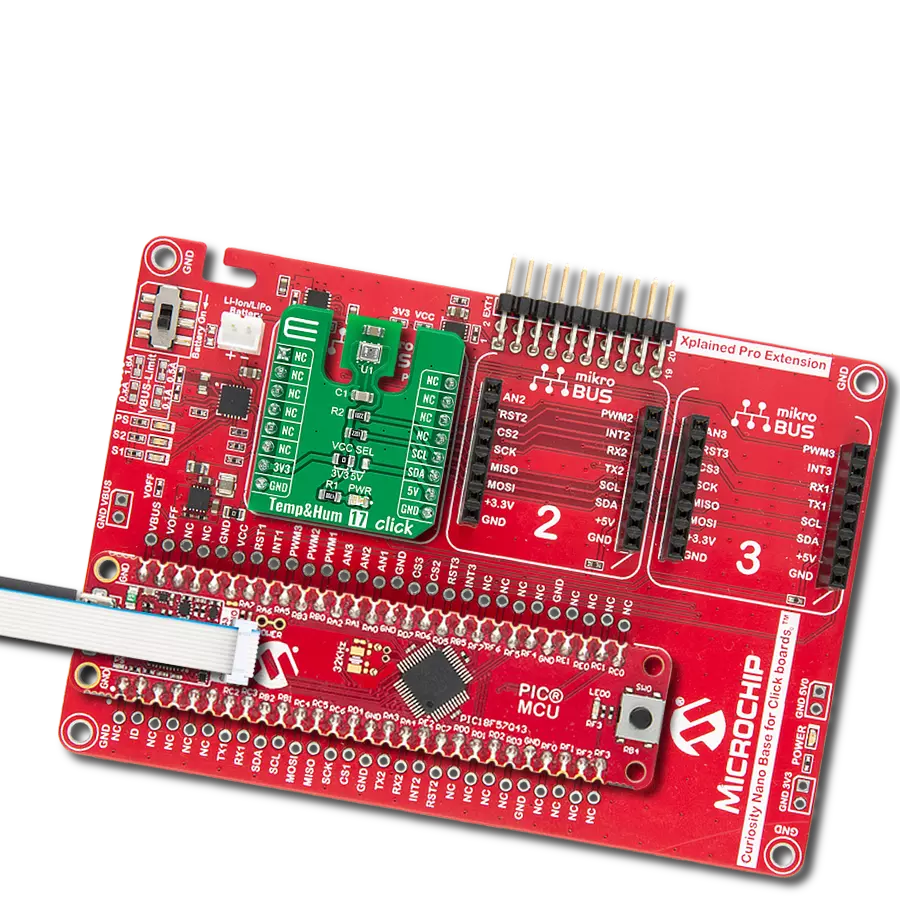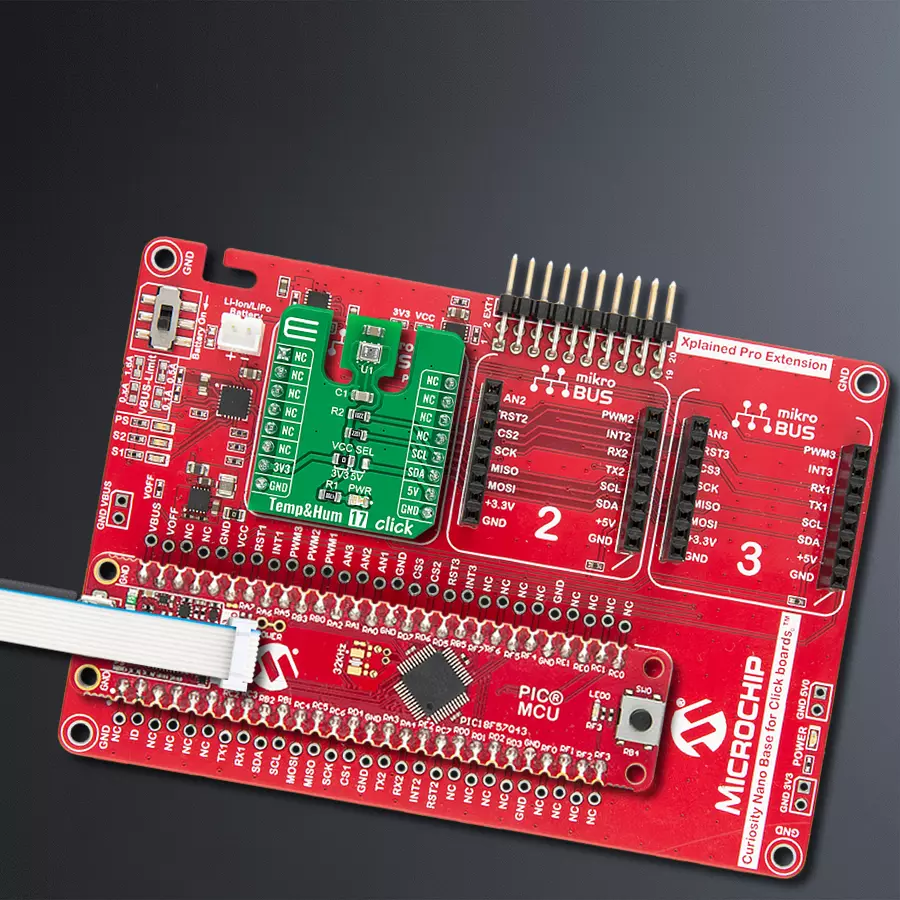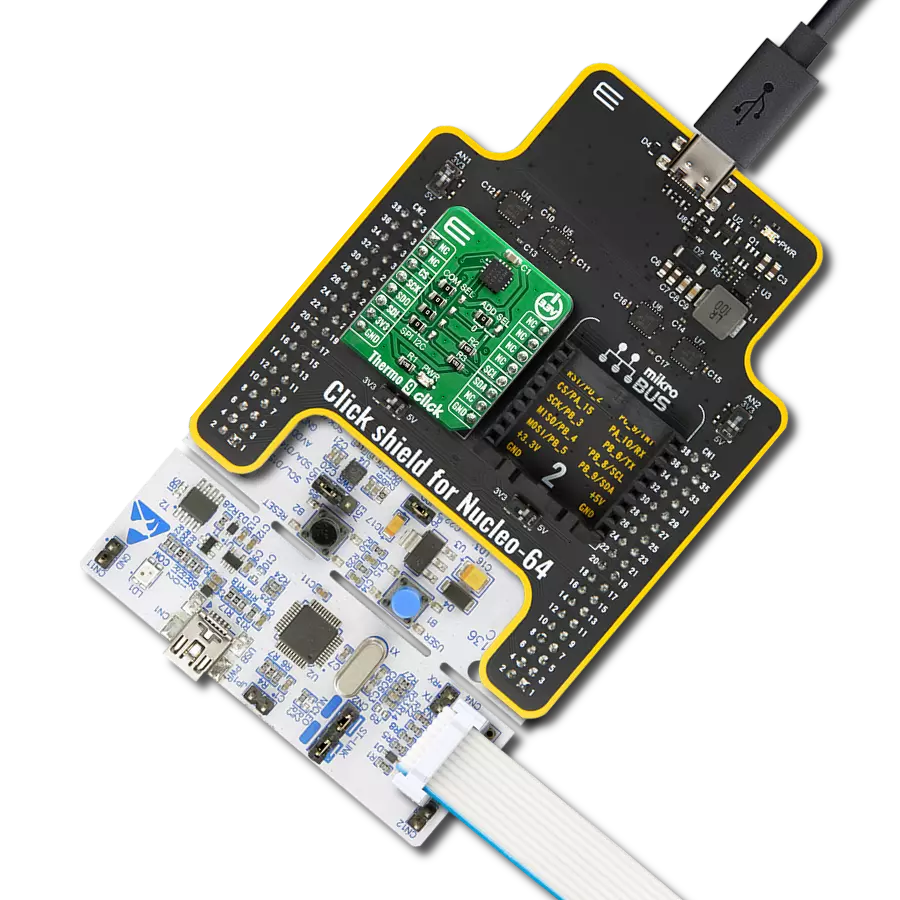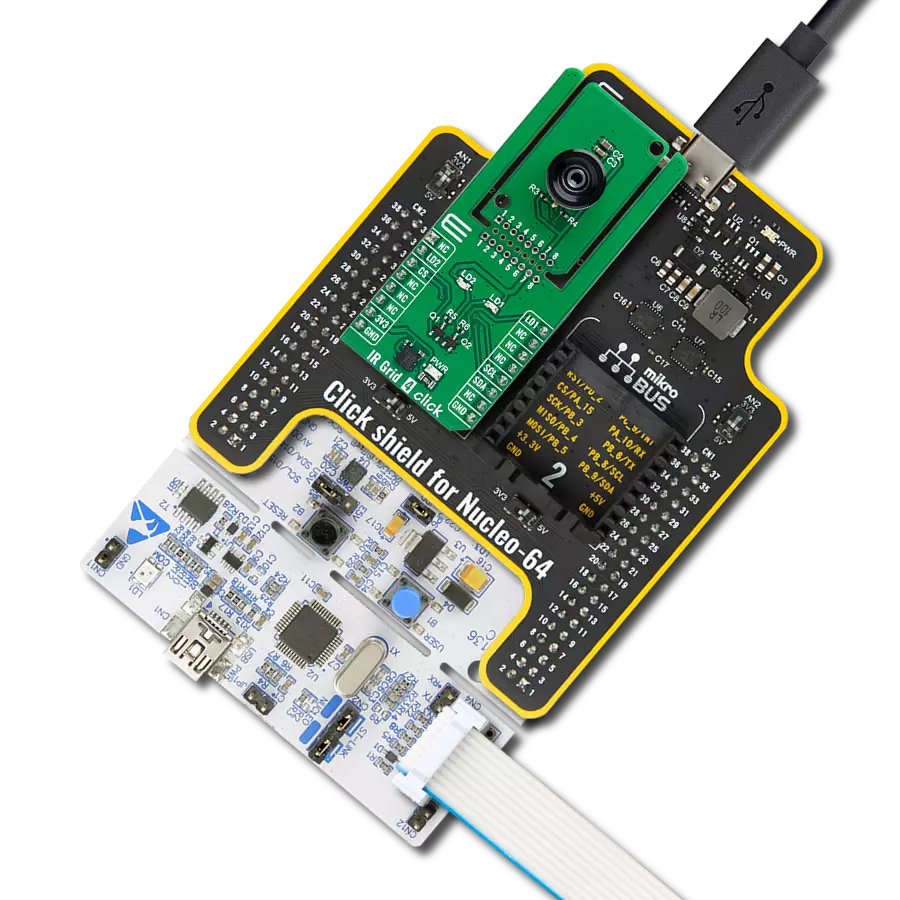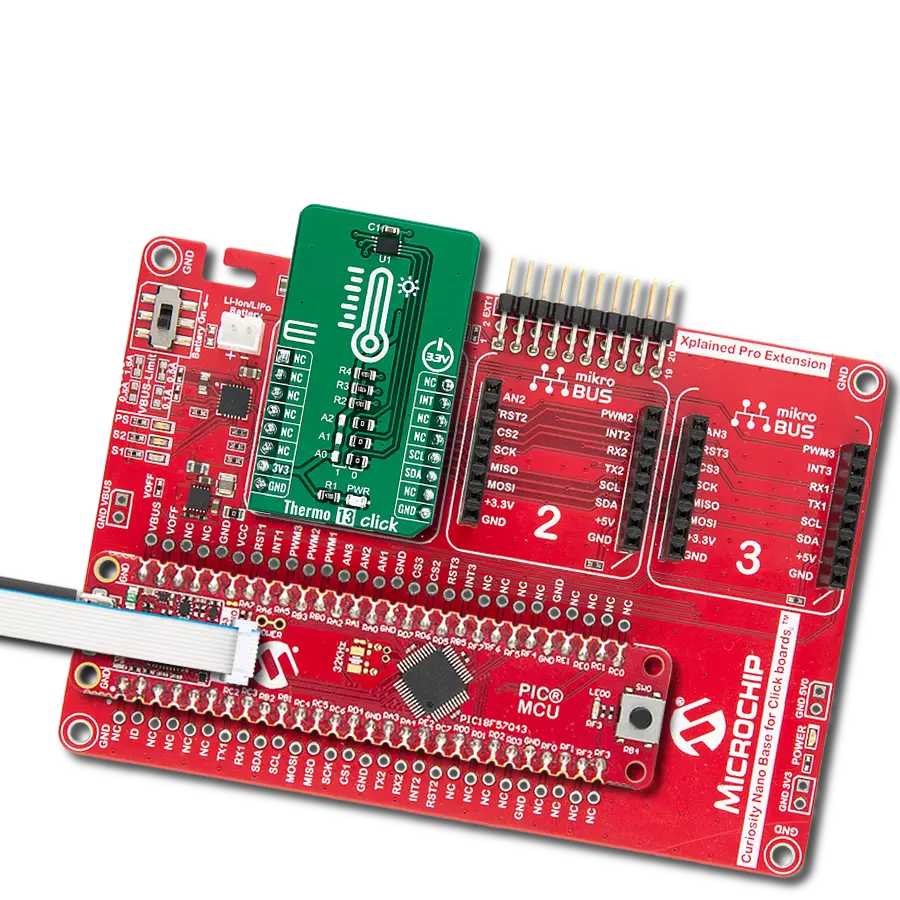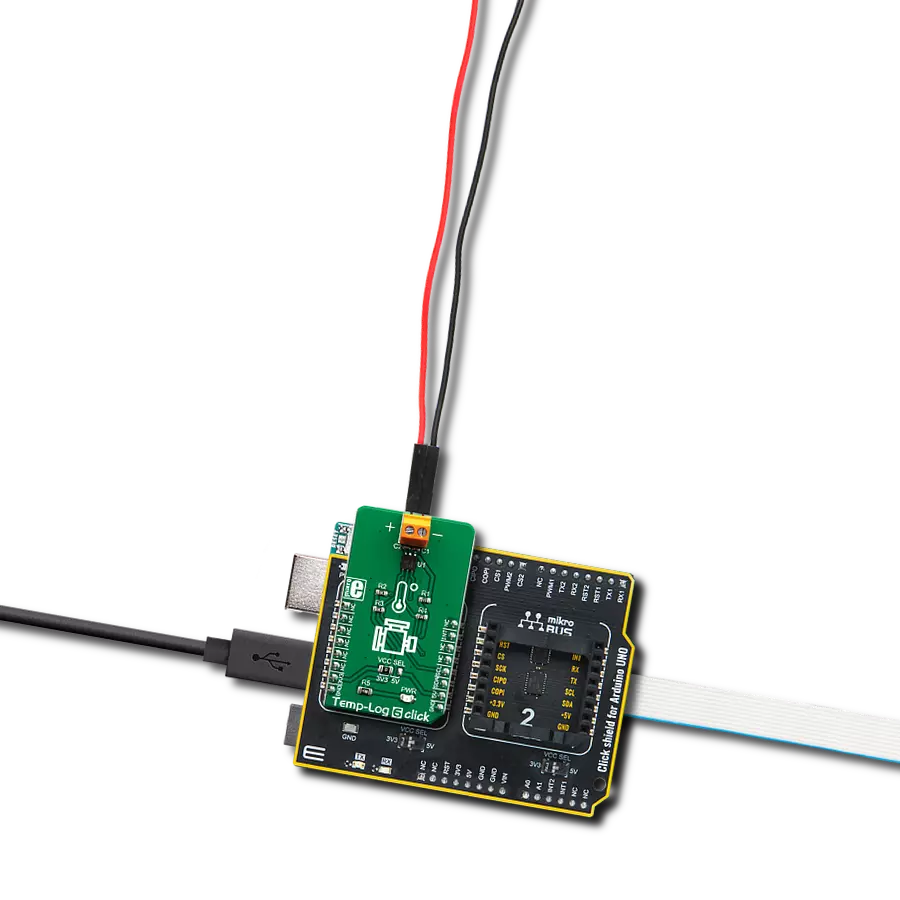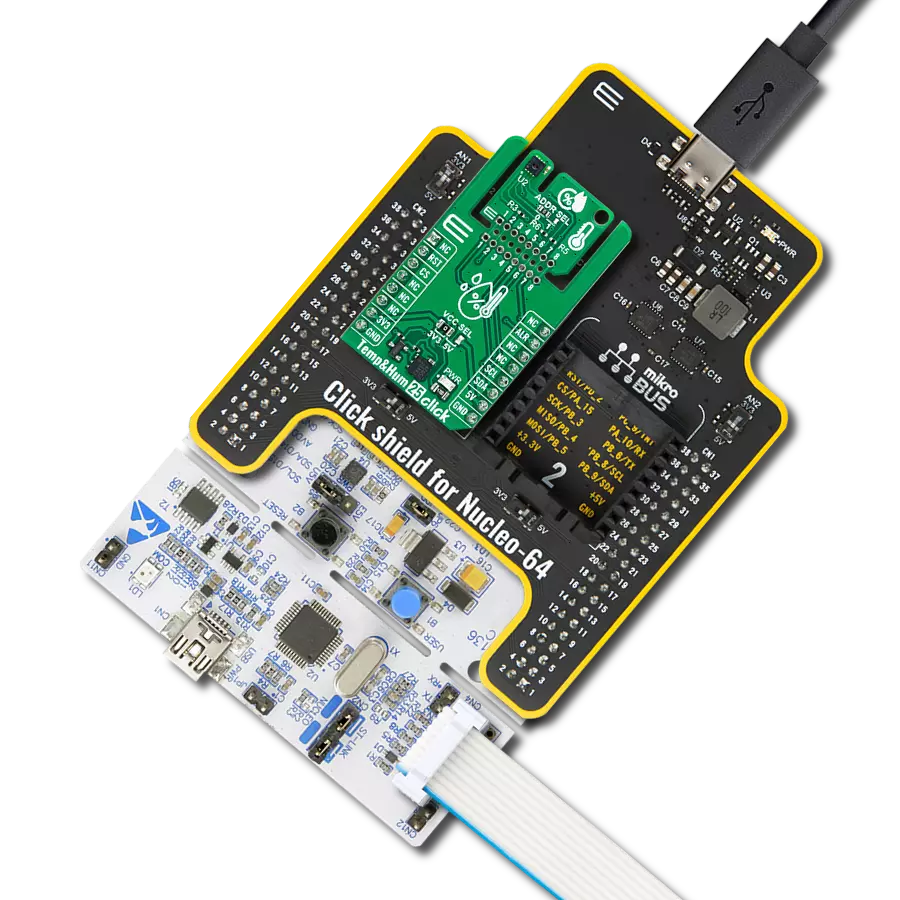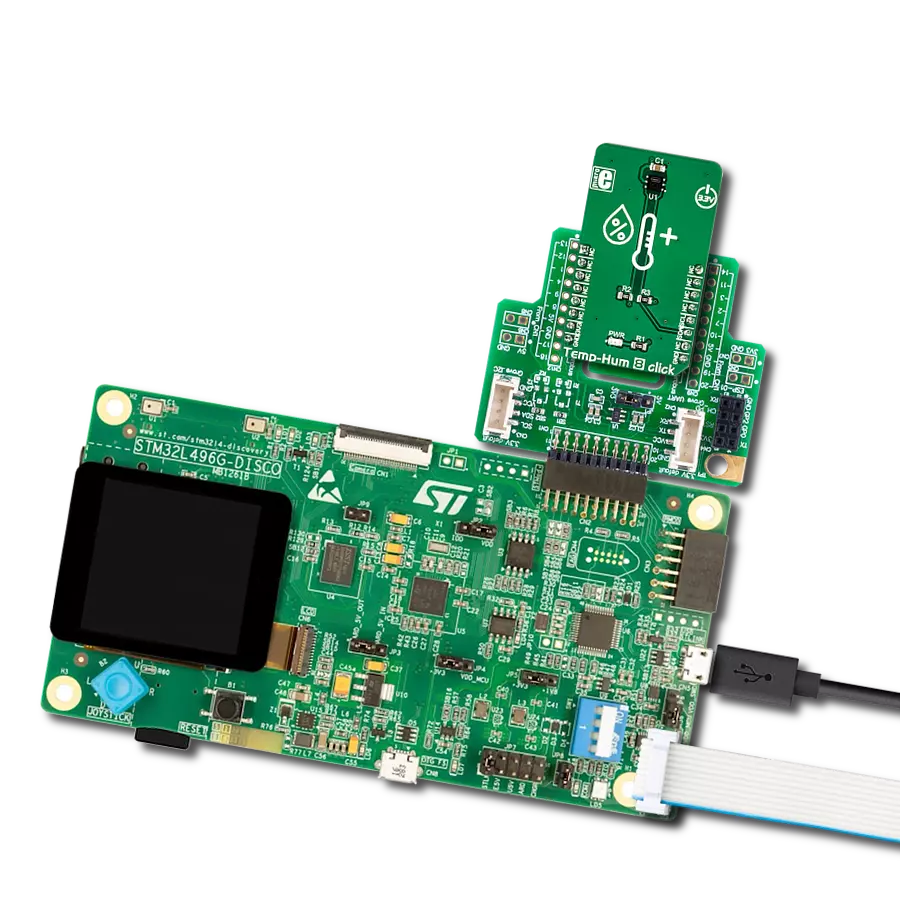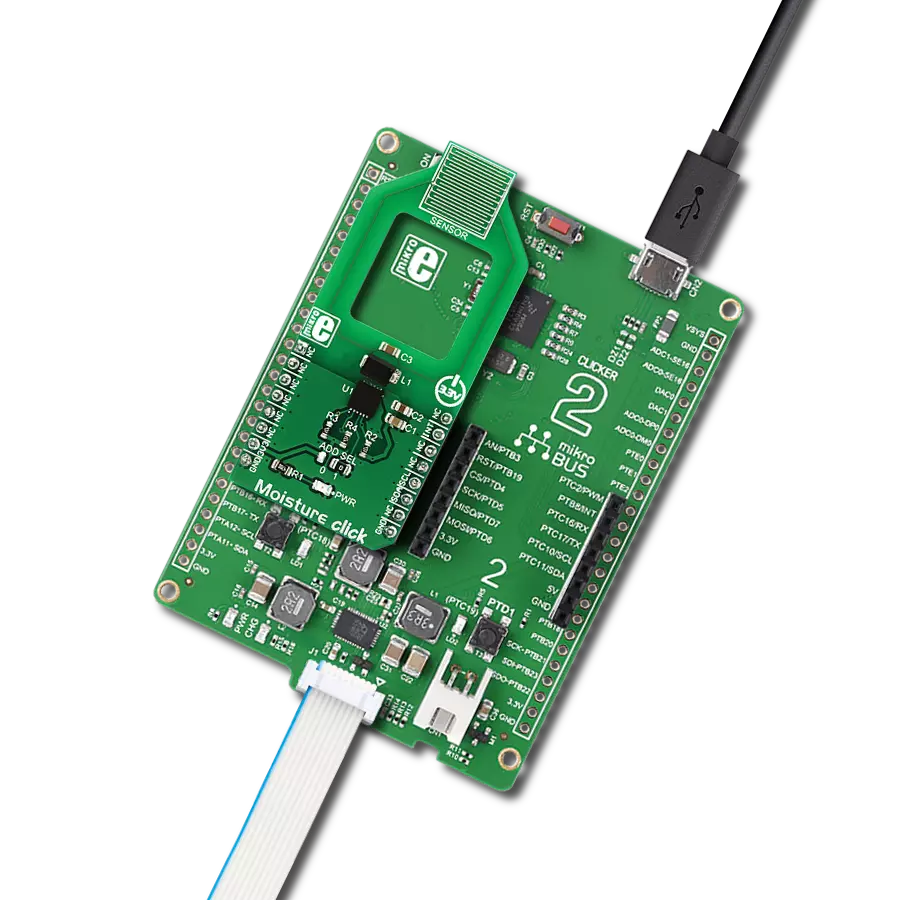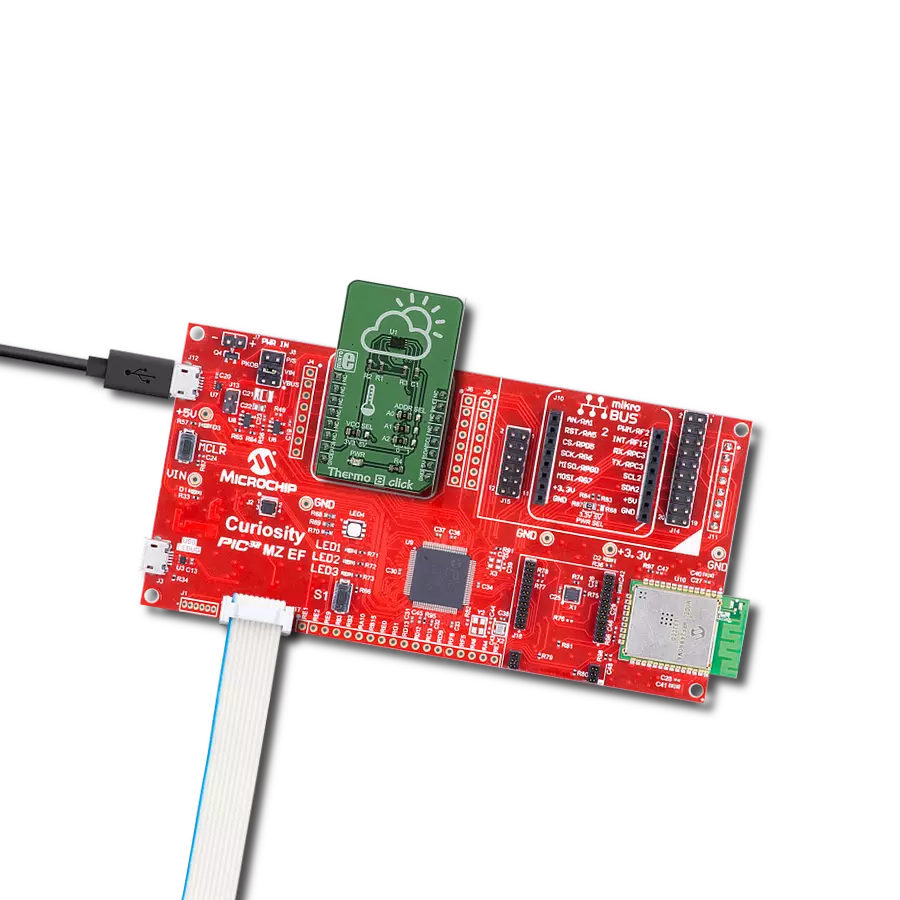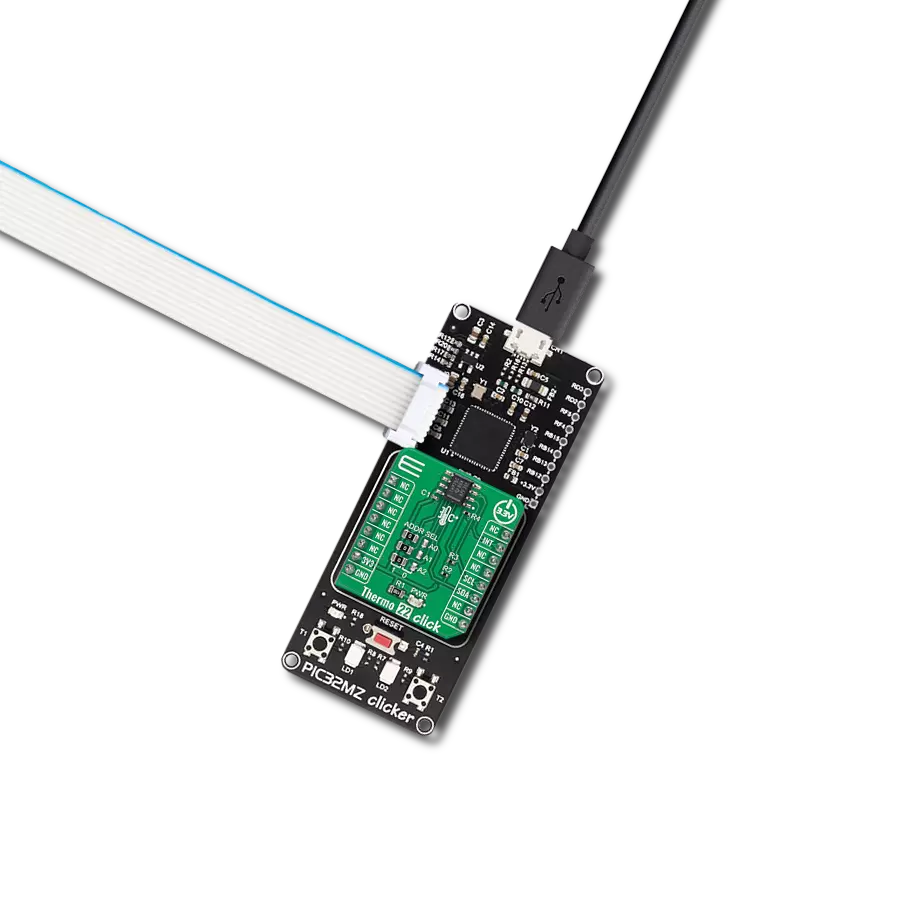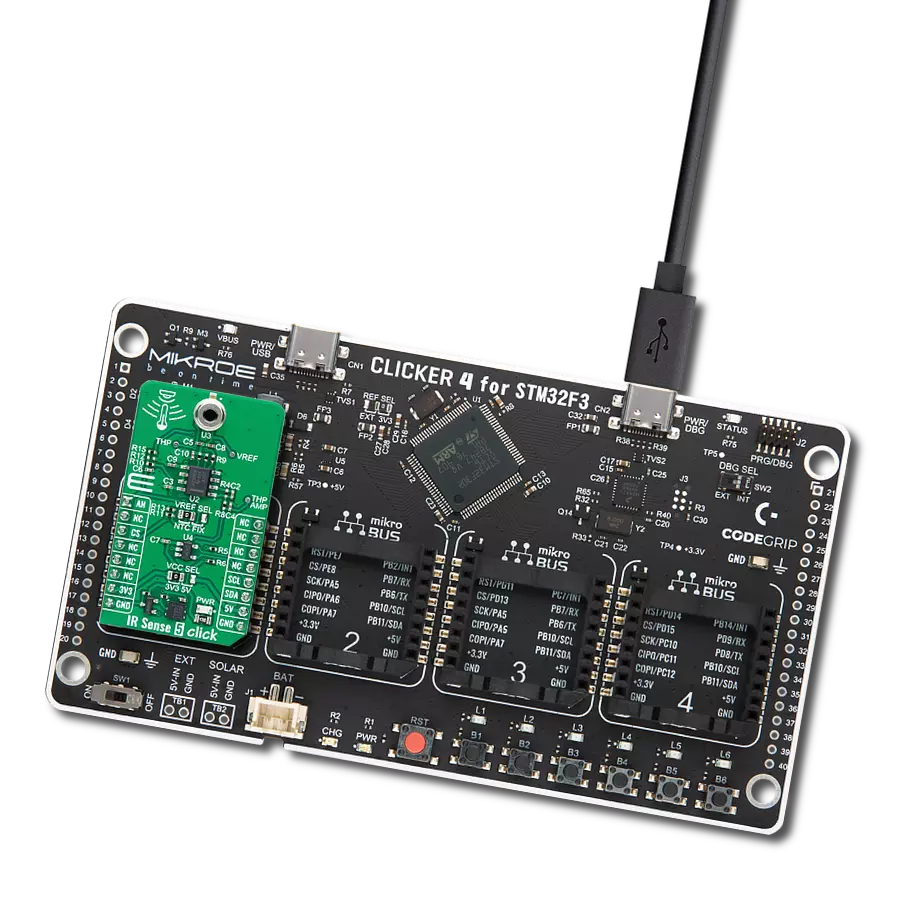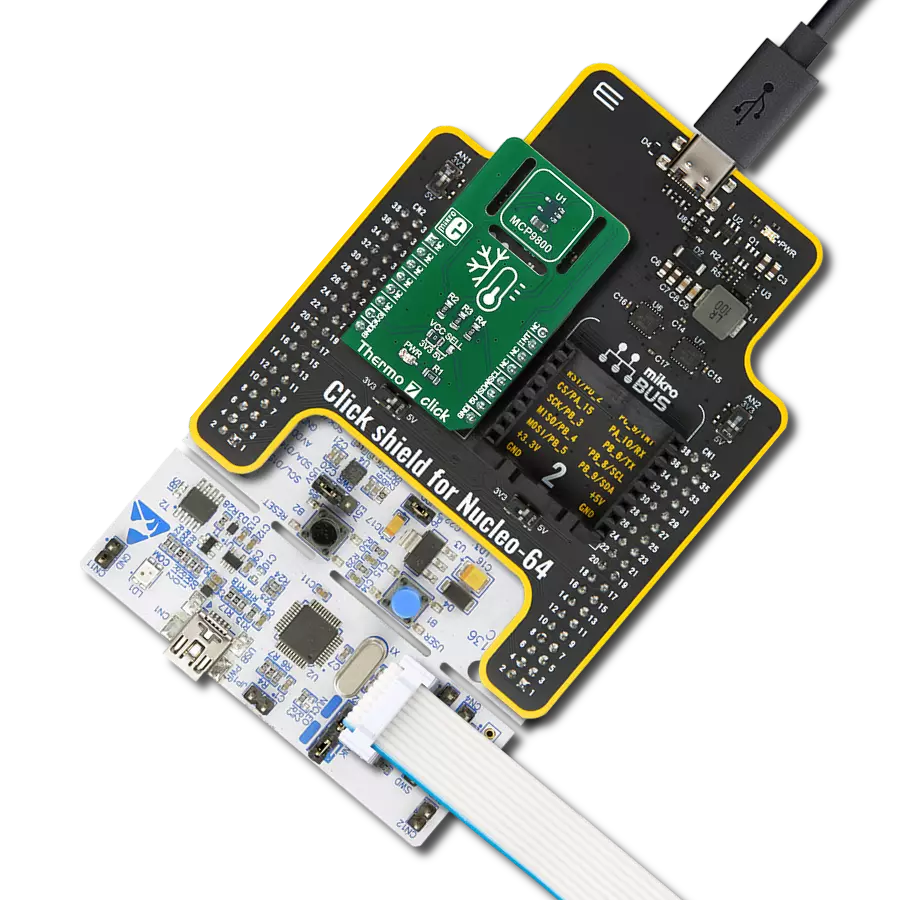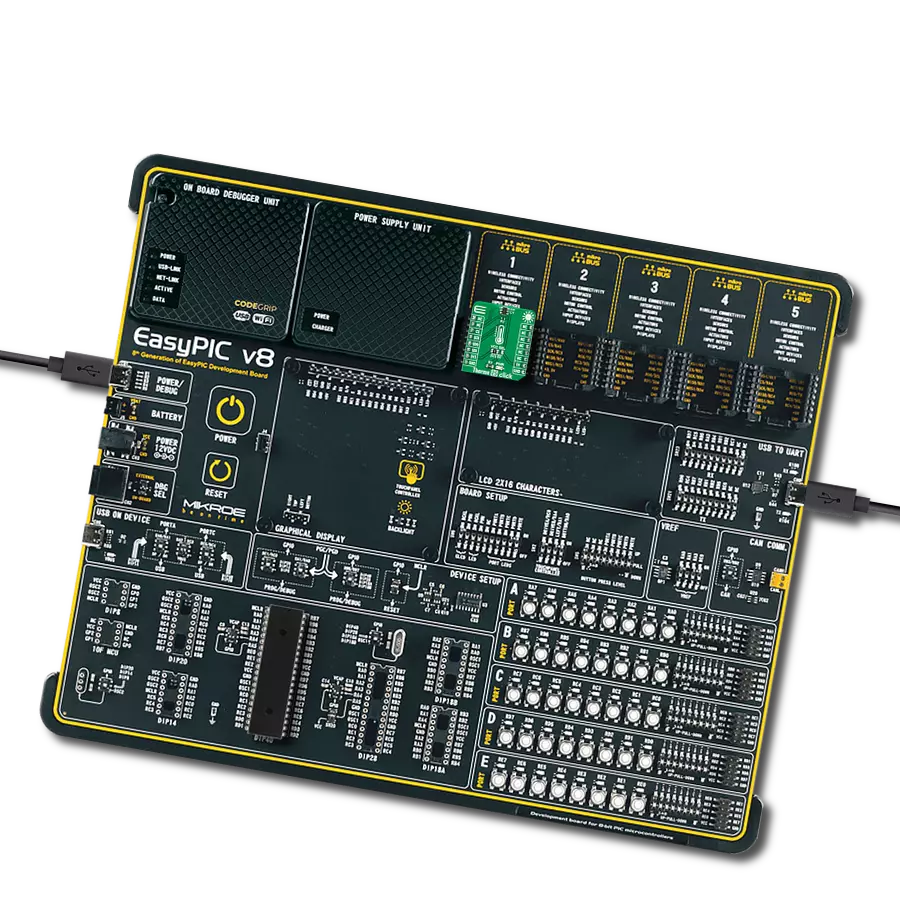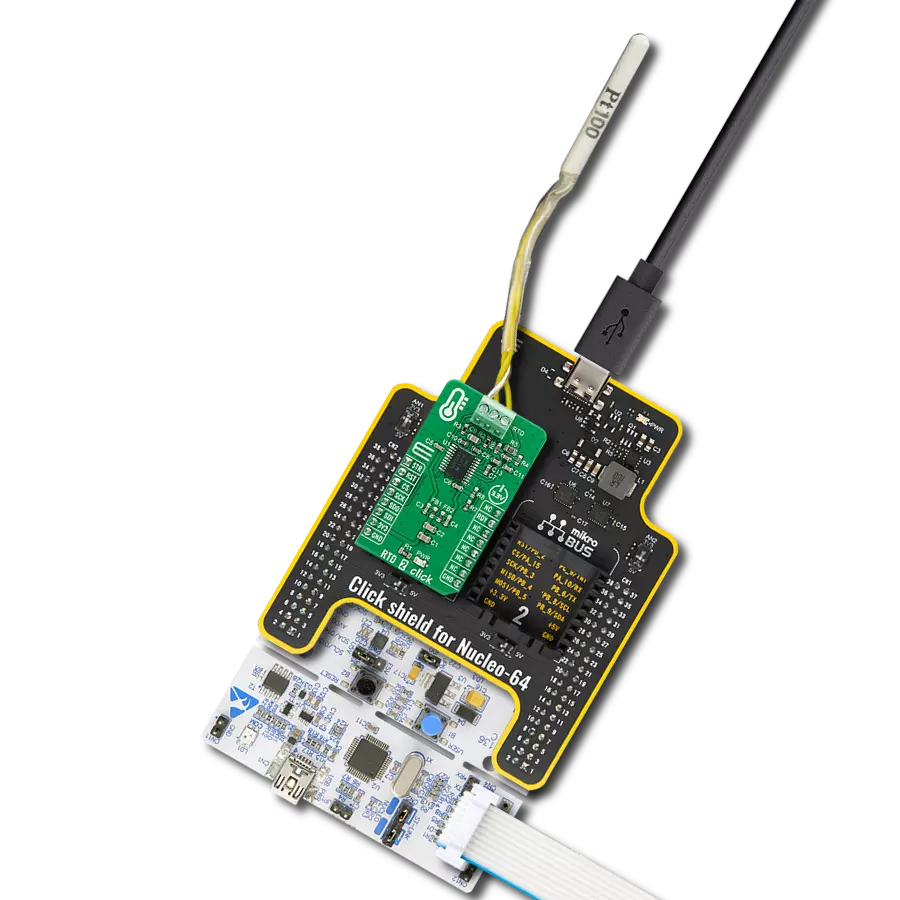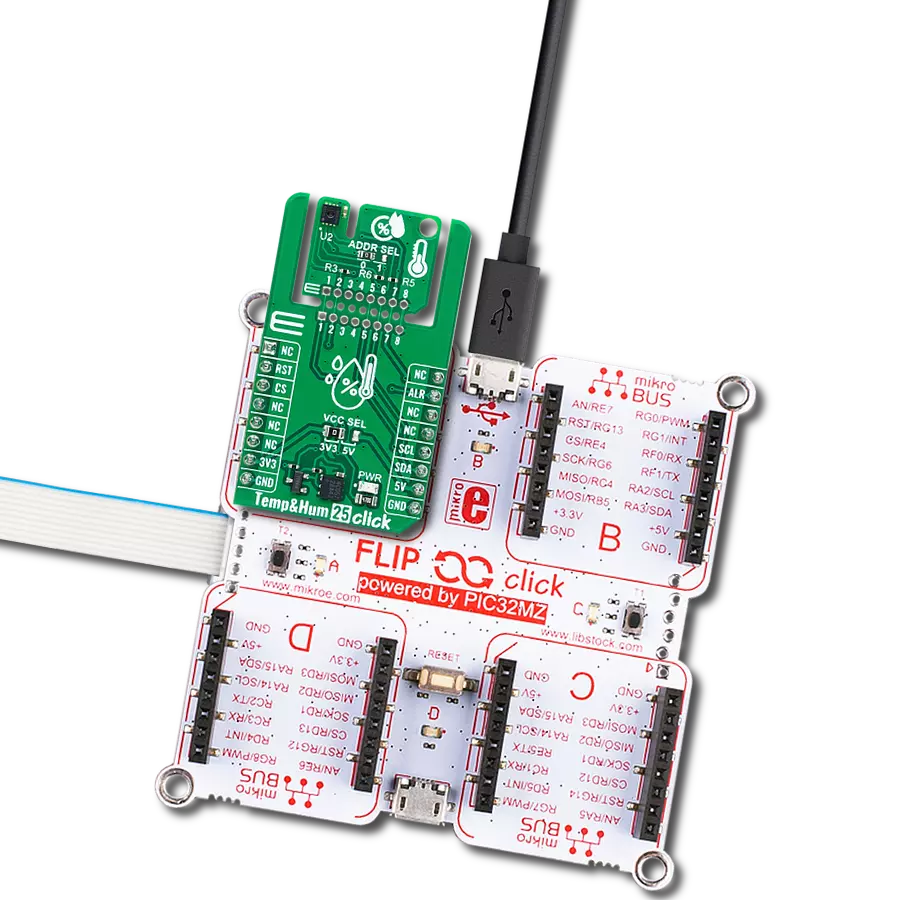Our solution offers versatile temperature and humidity monitoring for a wide range of applications, ensuring that you have the data you need to make informed decisions.
A
A
Hardware Overview
How does it work?
Temp&Hum 17 Click is based on the HS3001, a highly accurate, fully calibrated relative humidity and temperature sensor from Renesas. The humidity can be measured within a range of 0 to 100 %RH, while the temperature sensor is designed for a range of -10 to 80 °C. The typical accuracy for humidity is ±1.5 %RH in the measuring range of 10 up to 90 %RH at ambient temperature and ±0.2 °C for temperature between -10 - +80 °C with very low power consumption. The HS3001 digital sensor accurately measures relative humidity and temperature levels. The measured data is internally corrected and compensated for
accurate operation over a wide range of temperature and humidity levels, which brings us to its highlighted feature - user calibration is not required. The entire output consists of only four bytes of data; that's why calculating the corresponding relative humidity in percent and temperature in degrees Celsius is very easy. Temp&Hum 17 Click communicates with MCU using the standard I2C 2-Wire interface to read data and configure settings, supporting Standard Mode operation with a clock frequency up to 100kHz and Fast Mode up to 400kHz. The HS3001 is also factory-programmed to operate even in
Sleep Mode. In Sleep Mode, the sensor waits for commands from the MCU before taking measurements and only performs conversions when it receives a Measurement Request command; otherwise, it is always powered down. This Click board™ can operate with either 3.3V or 5V logic voltage levels selected via the VCC SEL jumper. This way, both 3.3V and 5V capable MCUs can use the communication lines properly. Also, this Click board™ comes equipped with a library containing easy-to-use functions and an example code that can be used as a reference for further development.
Features overview
Development board
PIC18F57Q43 Curiosity Nano evaluation kit is a cutting-edge hardware platform designed to evaluate microcontrollers within the PIC18-Q43 family. Central to its design is the inclusion of the powerful PIC18F57Q43 microcontroller (MCU), offering advanced functionalities and robust performance. Key features of this evaluation kit include a yellow user LED and a responsive
mechanical user switch, providing seamless interaction and testing. The provision for a 32.768kHz crystal footprint ensures precision timing capabilities. With an onboard debugger boasting a green power and status LED, programming and debugging become intuitive and efficient. Further enhancing its utility is the Virtual serial port (CDC) and a debug GPIO channel (DGI
GPIO), offering extensive connectivity options. Powered via USB, this kit boasts an adjustable target voltage feature facilitated by the MIC5353 LDO regulator, ensuring stable operation with an output voltage ranging from 1.8V to 5.1V, with a maximum output current of 500mA, subject to ambient temperature and voltage constraints.
Microcontroller Overview
MCU Card / MCU

Architecture
PIC
MCU Memory (KB)
128
Silicon Vendor
Microchip
Pin count
48
RAM (Bytes)
8196
You complete me!
Accessories
Curiosity Nano Base for Click boards is a versatile hardware extension platform created to streamline the integration between Curiosity Nano kits and extension boards, tailored explicitly for the mikroBUS™-standardized Click boards and Xplained Pro extension boards. This innovative base board (shield) offers seamless connectivity and expansion possibilities, simplifying experimentation and development. Key features include USB power compatibility from the Curiosity Nano kit, alongside an alternative external power input option for enhanced flexibility. The onboard Li-Ion/LiPo charger and management circuit ensure smooth operation for battery-powered applications, simplifying usage and management. Moreover, the base incorporates a fixed 3.3V PSU dedicated to target and mikroBUS™ power rails, alongside a fixed 5.0V boost converter catering to 5V power rails of mikroBUS™ sockets, providing stable power delivery for various connected devices.
Used MCU Pins
mikroBUS™ mapper
Take a closer look
Click board™ Schematic

Step by step
Project assembly
Software Support
Library Description
This library contains API for Temp&Hum 17 Click driver.
Key functions:
temphum17_wake_up- Temp&Hum 17 wake up function.temphum17_get_raw_data- Temp&Hum 17 get raw data function.temphum17_get_temp_hum- Temp&Hum 17 get temperature and humidity function.
Open Source
Code example
The complete application code and a ready-to-use project are available through the NECTO Studio Package Manager for direct installation in the NECTO Studio. The application code can also be found on the MIKROE GitHub account.
/*!
* @file main.c
* @brief TempHum17 Click example
*
* # Description
* This library contains API for the Temp&Hum 17 Click driver.
* This demo application shows an example of
* relative humidity and temperature measurement.
*
* The demo application is composed of two sections :
*
* ## Application Init
* Initialization of I2C module and log UART.
* After driver initialization and default settings,
* the app display retrieves the sensor parameters
* such as temperature and relative humidity.
*
* ## Application Task
* This is an example that shows the use of a Temp&Hum 17 Click board™.
* Logs the temperature [ degree Celsius ] and relative humidity [ % ] data.
* Results are being sent to the Usart Terminal where you can track their changes.
*
* @author Nenad Filipovic
*
*/
#include "board.h"
#include "log.h"
#include "temphum17.h"
static temphum17_t temphum17;
static log_t logger;
static float temperature;
static float humidity;
static uint8_t status;
void application_init ( void ) {
log_cfg_t log_cfg; /**< Logger config object. */
temphum17_cfg_t temphum17_cfg; /**< Click config object. */
/**
* Logger initialization.
* Default baud rate: 115200
* Default log level: LOG_LEVEL_DEBUG
* @note If USB_UART_RX and USB_UART_TX
* are defined as HAL_PIN_NC, you will
* need to define them manually for log to work.
* See @b LOG_MAP_USB_UART macro definition for detailed explanation.
*/
LOG_MAP_USB_UART( log_cfg );
log_init( &logger, &log_cfg );
log_info( &logger, " Application Init " );
// Click initialization.
temphum17_cfg_setup( &temphum17_cfg );
TEMPHUM17_MAP_MIKROBUS( temphum17_cfg, MIKROBUS_1 );
err_t init_flag = temphum17_init( &temphum17, &temphum17_cfg );
if ( init_flag == I2C_MASTER_ERROR ) {
log_error( &logger, " Application Init Error. " );
log_info( &logger, " Please, run program again... " );
for ( ; ; );
}
temphum17_default_cfg ( &temphum17 );
log_info( &logger, " Application Task " );
Delay_ms ( 100 );
}
void application_task ( void ) {
if ( temphum17_get_temp_hum( &temphum17, TEMPHUM17_RESOLUTION_14_BITS, &temperature, &humidity ) == TEMPHUM17_STATUS_VALID_DATA ) {
log_printf( &logger, " Temperature : %.02f C\r\n Humidity : %.02f %%\r\n", temperature, humidity );
} else {
log_printf( &logger, " Measurement Error\r\n\tStale Data\r\n" );
}
log_printf( &logger, "-------------------------\r\n" );
Delay_ms ( 1000 );
}
int main ( void )
{
/* Do not remove this line or clock might not be set correctly. */
#ifdef PREINIT_SUPPORTED
preinit();
#endif
application_init( );
for ( ; ; )
{
application_task( );
}
return 0;
}
// ------------------------------------------------------------------------ END
Additional Support
Resources
Category:Temperature & humidity
